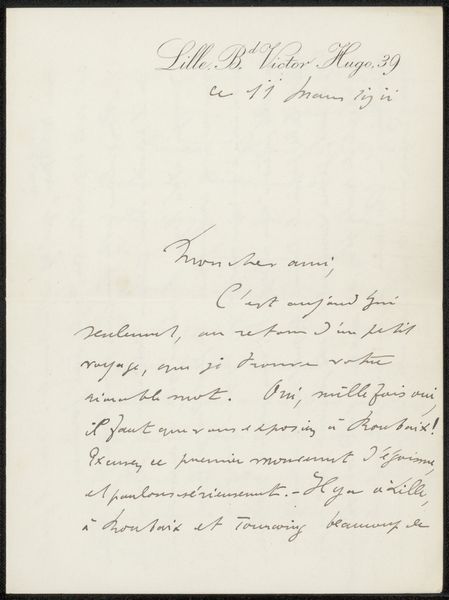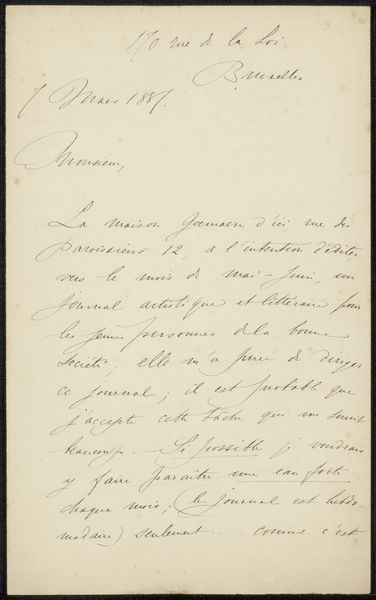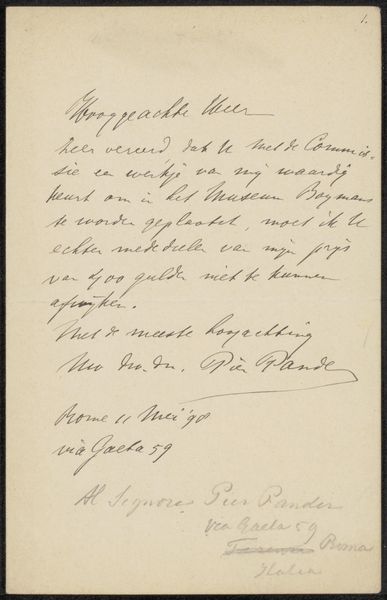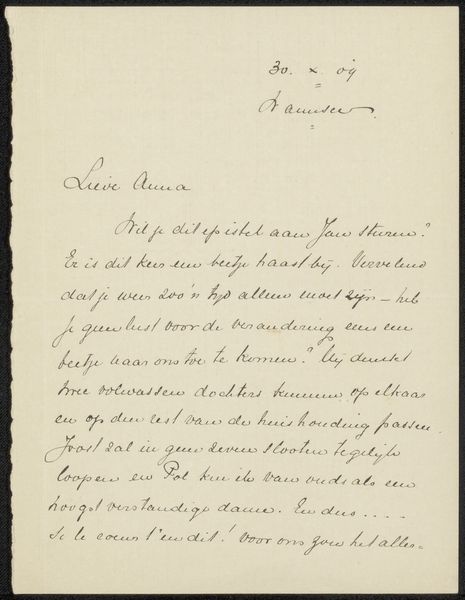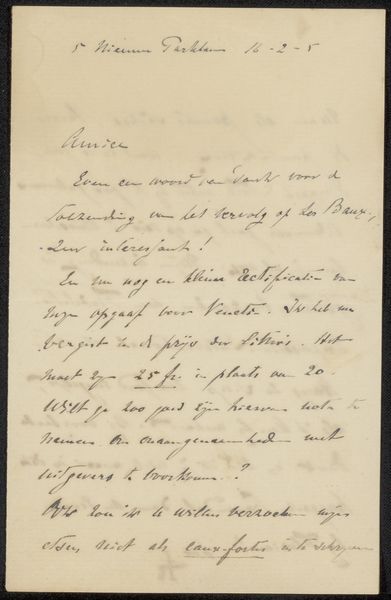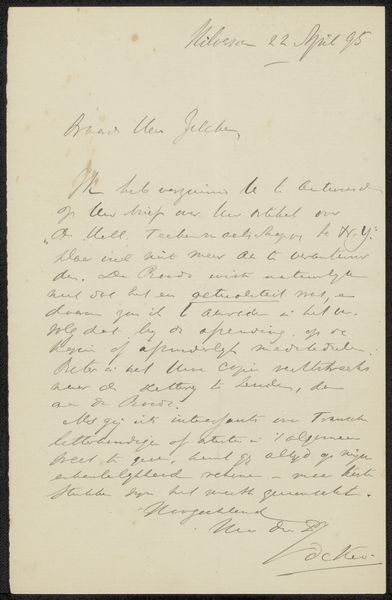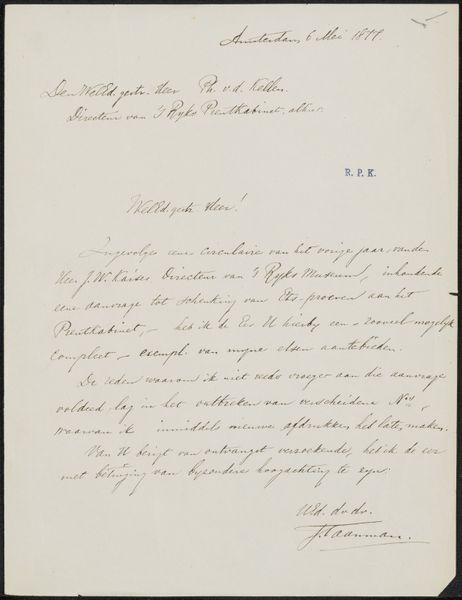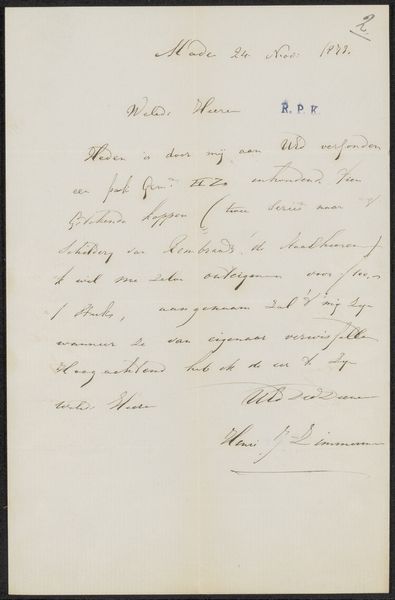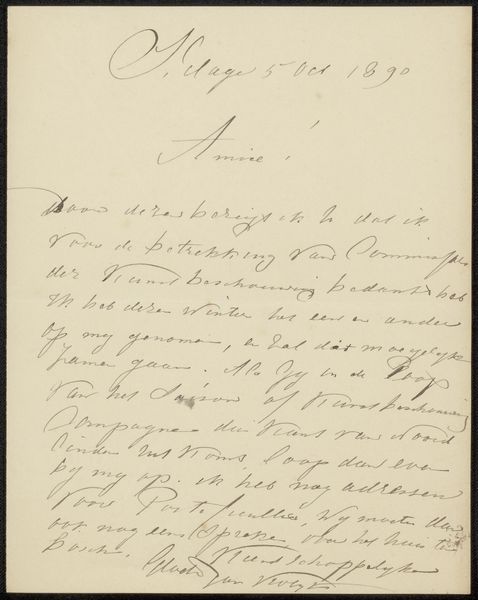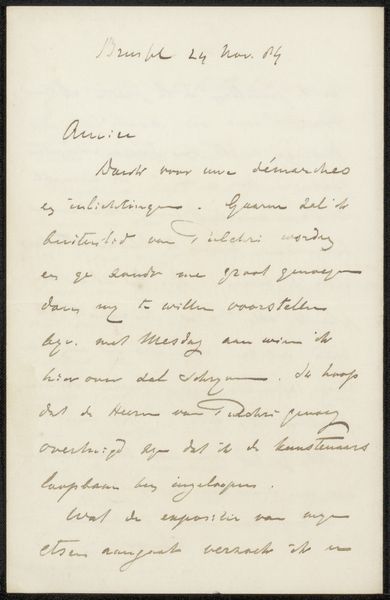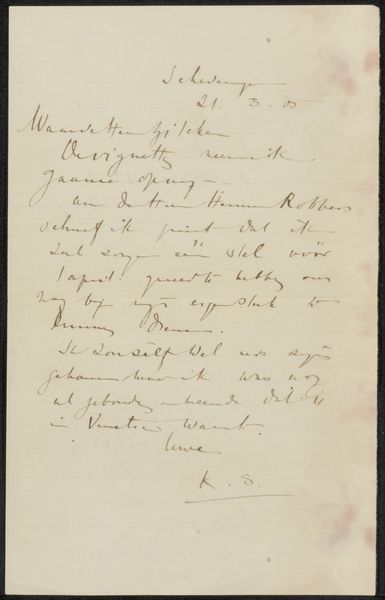
drawing, paper, ink, pen
#
drawing
#
comic strip sketch
#
old engraving style
#
hand drawn type
#
paper
#
personal sketchbook
#
ink
#
hand-drawn typeface
#
pen-ink sketch
#
ink colored
#
pen work
#
sketchbook drawing
#
pen
#
sketchbook art
Copyright: Rijks Museum: Open Domain
Curator: So, here we have “Brief aan Anna Dorothea Dirks,” possibly from between 1909 and 1913, by Andrè Jolles. It's an ink drawing on paper. Editor: It's just fascinating to me how casual and familiar this drawing feels; you know, like a snippet from a friend. What strikes you when you look at the materiality of this letter? Curator: Well, I see a deliberate attempt to subvert traditional notions of art. Jolles takes something so functional – a personal letter, written in ink – and presents it almost as a found object. Think about the paper, probably cheap, mass-produced. The ink, readily available. It strips away the preciousness associated with high art. What kind of labor does the handwriting reveal? Editor: I hadn’t thought of it that way. The handwriting, definitely. It seems to reveal not only a personal touch but a certain lack of artifice. No fancy calligraphy here. The labor is functional communication. What’s the effect of seeing an everyday tool like the pen so front and center? Curator: It shifts our focus to the process of communication itself. Jolles is foregrounding the tools and means by which messages are transmitted. Consider this letter as a commodity. Is it merely information, or is it elevated by its form – by the materiality of the ink and paper? The labour, the making… where is the value created, and who determines that value? Editor: It’s definitely making me rethink the boundaries between personal communication and artistic expression. It's not just a message; it's an artifact, loaded with social implications. Curator: Precisely. We see here a clear deconstruction of what we typically consider ‘art,’ forcing us to examine the systems and materials that construct our understanding. It’s really quite profound. Editor: That's such an eye-opener. I now see how the materials themselves and the method in which the artist communicated contribute significantly to this piece's overall meaning and purpose.
Comments
No comments
Be the first to comment and join the conversation on the ultimate creative platform.
